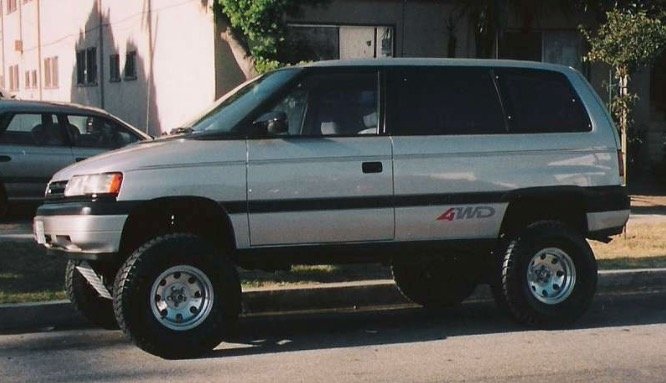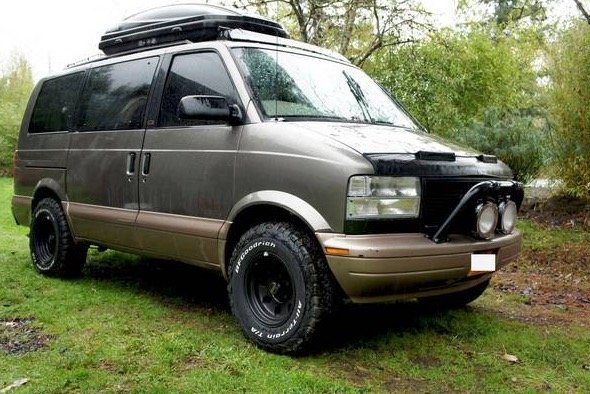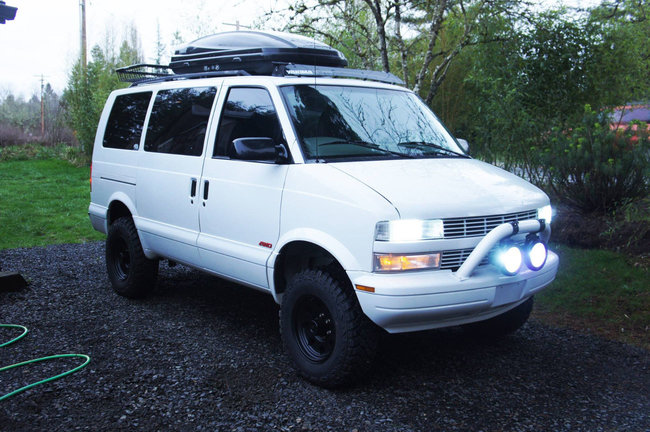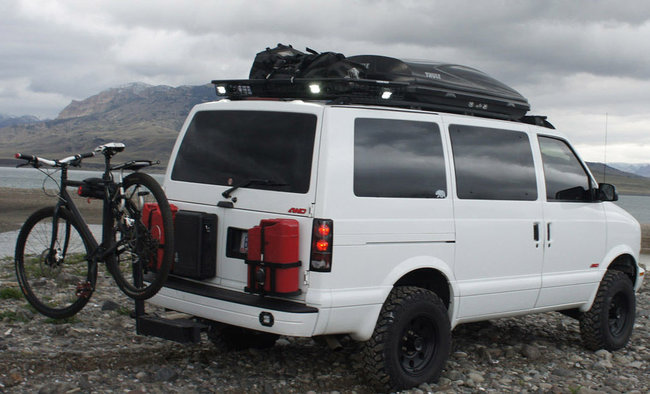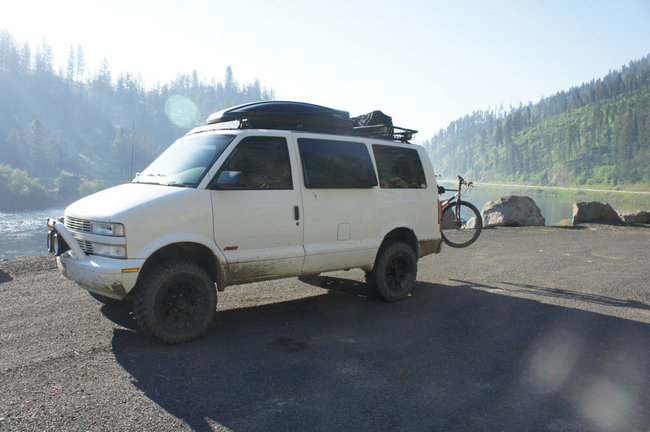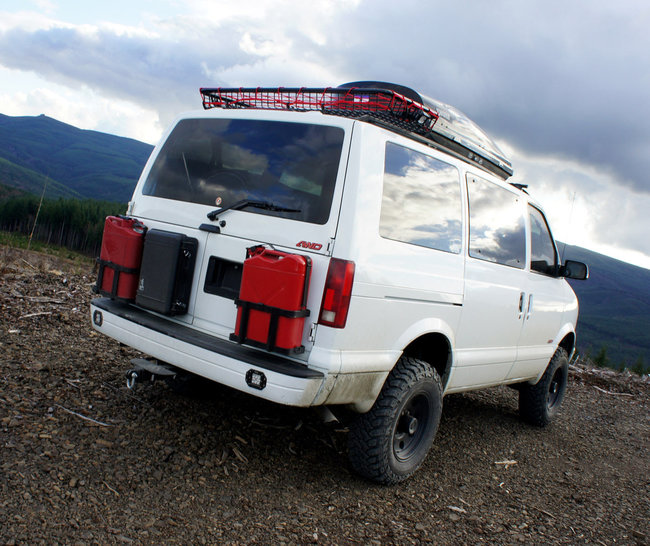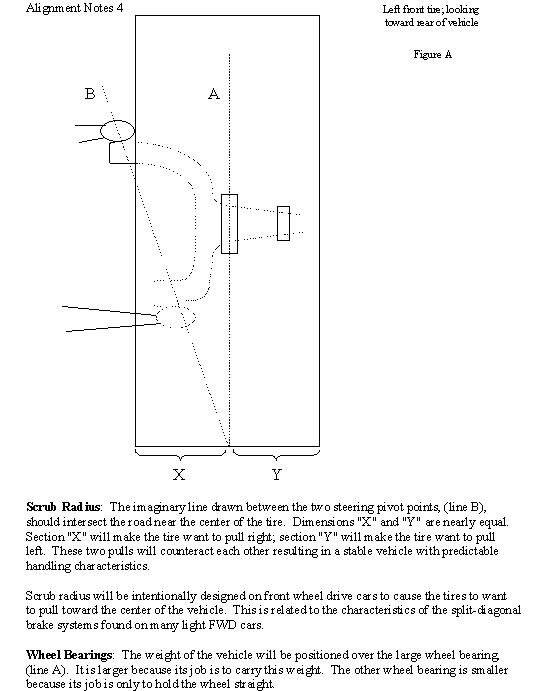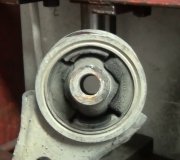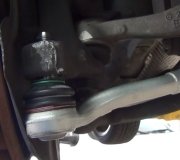Allow me to add a few comments from a mechanic's point of view. Just like doctors, we have to always be concerned with potential lawsuits. As such, you will never find a conscientious mechanic doing ride height modifications on customers' vehicles. Lawyers and insurance investigators love to find these kinds of modifications on the other guy's car when they're trying to shift the blame for the crash from their client who caused it. They will convince a jury that you were partly at fault because you were less able to avoid it, and they will be tight.
No one can argue that you can't stop as fast with a lifted vehicle. Simple physics dictates that with a higher center of gravity, more weight will shift to the front tires during a hard stop. That leaves the rear tires skidding under light braking, and skidding tires have no traction; not for steering, accelerating, or stopping.
All braking systems are carefully balanced front-to-rear by the engineers. Part of that system is the proportioning valve. That lives inside the combination valve; a brass block under the master cylinder that the steel lines go into. That valve is very carefully calibrated according to the optional equipment the vehicle came with, and makes up for the weight shift during braking. The valve limits how much brake fluid pressure goes to the rear wheels. Does your lift kit include a new combination valve? If not, you can be sure if someone else runs a red light and you hit him, someone is going to be looking at that valve once they see the height modification.
When the truck is level, the steering linkages must be parallel to the lower control arms. That insures the wheels don't turn in and out as the vehicle bounces up and down. If you use drop spindles, that relationship won't change. It would be like parking with the tires sitting on 2x4s. The difference though, is you're physically moving the wheels and bearings down, as you say, four inches, to raise everything else up four inches. That includes the ball joints. That leads to another little-known, and non-adjustable alignment angle called "scrub radius". If you stand in front of the truck and look back at the ball joints, draw an imaginary line through them. That line must intersect the tire tread at a very specific point where it hits the road. I posted a drawing I used in my classroom to illustrate scrub radius.
Due to road forces, half of the tire's tread wants to pull to the left, and the other half wants to pull to the right. Those two forces offset each other. Once lifted, and scrub radius is altered, you'll still have the same mismatch on the other tire, so most of the time you won't notice any difference when driving, however, when only one tire hits a bump in the road, it is going to cause that tire to do harder whatever characteristic it would normally do, meaning pull the truck to one side, tug on the steering linkage and steering wheel, or transmit those road forces into the body. Driving will absolutely feel different.
As a point of interest, scrub radius was re-engineered on front-wheel-drive cars. They have around 80 percent of the vehicle's weight on the front instead of he normal 70 percent. If the front half of the brake system popped a leak, only the rear would work, and you'd skid and skid, and they'd find you in the next county before you came to a stop. To address that, almost all front-wheel-drive cars use a "split-diagonal" brake hydraulic system that pairs one front brake with the opposite rear brake. That insures you'll still have 50 percent of your braking power if half the system fails. On older rear-wheel-drive cars and trucks, only one working front brake will tear the steering wheel out of your hands, (don't ask me how I know this!). With only one working front brake on a front-wheel-drive car, this doesn't happen, thanks to the redesigned scrub radius. On Chrysler products, you will only see the red "Brake" warning light. On all other cars, at most you might see a little wiggle in the steering wheel when you apply the brakes. That shows how much effect scrub radius has, and you're going to change that a real lot on your van, and think nothing will be affected?
As long as we're talking about all-wheel-drive vehicles, it is important to point out these are not the same as four-wheel-drive vehicles. Chrysler made that very clear when they came out with their all-wheel-drive Caravan in 1993. ":Four-wheel-drive" implies driving through the woods and fields where most of us aren't supposed to go. Astro Vans and some Jeeps use a full-time transfer case that can't be shifted into two-wheel-drive mode. The front and rear driveshafts are continuously locked together. As such, it is critical that all four ties be replaced at the same time. It is even not acceptable to buy two new tires from one tire dealer, then buy two of the same model and size from a different store. There can be too much circumference variation even between tires that were built during different shifts at the same plant. The slightest mismatch puts an enormous strain on the transfer case, and has been the cause of a lot of lawsuits. All tire shops are aware of this issue for these vehicles.
Other minivans are called "all-wheel-drive" because they are not intended for off-road use. They have a viscous coupling in the middle of the rear drive shaft that allows the rear wheels to rotate at different speeds than the front wheels, even though they're still pulling. The rear wheels normally go slower when the vehicle goes around a curve. You might have a locking rear differential on your Astro Van, but you won't find that in an all-wheel-drive minivan. That means, as with all front-wheel-drive axles, when one tire spins on loose sand, the other tire on that axle does nothing. Of course, when they all have good traction and aren't slipping, all four tires will pull.
I went to Chrysler's school on their AWD system, and at the end of the day we were allowed to drive through a very muddy gully. The instructor was surprised when one student came back with huge blobs of mud, ... On the roof, but none of us were able to get it stuck. But as a point of interest, my old '88 Grand Caravan was never stuck in our Wisconsin snow drifts where I couldn't get it out on its own. My mother's '95 Grand Caravan was stuck the minute a single snowflake fell on the other side of the county. They were simply not the same vehicle. With that much difference between two revisions of the same model, you can understand that being able to go somewhere with one model doesn't mean you're going to have the same experience with a different brand or model, or year.
I mentioned the drop spindles for the Astro Van as one method of lifting it. That is not an option on four-wheel-drive models or on other minivans. The outer CV joints will rub on the lower control arms. There's no room for front coil springs either. You'll have torsion bars which are adjustable. Alignment specialists use them to correct ride height to factory specs before doing an alignment. When you use them to raise the front end, you're changing the parallelogram shape between the upper and lower control arms, the frame rail, and the spindle. If you look at the lower control arm on a truck at correct ride height, you'll see it is perfectly parallel to the ground, and the upper control arm is angled down just a little. The upper arm is also considerably shorter than the lower arm. That design has been carefully engineered to cause the wheel to tip in and out on top as the truck bounces up and down. That reduces the how much that tire slides back and forth across the road surface as the body goes up and down. Changing the angles of those arms by changing ride height, changes how those tires tip in and out. This is where we find horrendous tire wear even though the numbers on the alignment computer are perfect, and it's why conscientious mechanics who have your best interest at heart won't align a vehicle not restored to proper ride height.
You will find every brand and model of lift kit for trucks and lowering kits for cars comes with the disclaimer, "For off-road use only". The manufacturers know they're opening themselves up to all kinds of lawsuits, and this is their way out. That leaves all the liability up to you. You may find even your insurance company won't want to get involved if it can be proved a non-approved modification was performed. Remember too, the world of new-car marketing is extremely competitive. If a manufacturer can advertise one more cubic inch of engine size, one more horsepower, or one more cup holder, they are going to do it. With the market for lowered cars and raised trucks, if they could offer products that appeal to those customers, you can be sure they would do it. They don't because they know they would be compromising safety, and they know that would result in more lawsuits. They'll even sell you the parts, then say you had no business putting them on a street car.
I'm not arguing with your success or your enjoyment. I just want you to be aware there is another side to the story, and I'd be real nervous when selling an altered vehicle.
Image (Click to make bigger)
Saturday, October 13th, 2018 AT 10:16 PM
